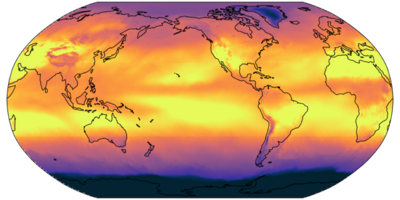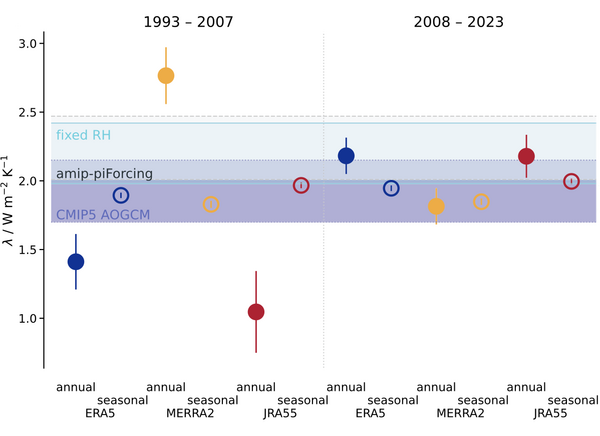Earth’s self-regulation is weaker than assumed
Various factors determine how Earth’s surface temperature responds to the increasing concentration of long-lived greenhouse gases in the atmosphere. The most basic of these is the change in the rate at which thermal energy is radiated into space for a given change in Earth’s surface temperature. This feedback is influenced by, among other things, cloud cover and its possible changes due to global warming. However, even its value for a cloud-free atmosphere, called the clear-sky long-wave feedback, is still debated. It has been estimated theoretically, for an idealized atmosphere in which the relative humidity remains constant even with increasing temperatures, and using climate models. Helene Gloeckner and her colleagues from the Max Planck Institute for Meteorology (MPI-M) have tested these estimates using long-term global observations.
“Determining the long-wave feedback parameter using observations is challenging because daily changes in cloud cover and humidity strongly influence it,” explains Gloeckner. Consistency of different measurements and sufficiently long periods of time are therefore necessary to estimate its magnitude from observations.
Derivation of the feedback strength from Reanalysis data
The MPI-M team used three Reanalysis data sets from 1993 to 2023, which use weather models and observations to provide a consistent description of atmospheric conditions over long periods of time. The team considered temperature and humidity variations in the reanalyses and calculated the related changes in the radiant energy transport. The results differ depending on whether seasonal or inter-annual variability is considered—especially before 2008. After that, there is much better agreement between these two values, as well as among the three data sets, which the scientists attribute to improved satellite-based instruments incorporated by each of the reanalysis products.
The MPI-M team finds that the calculated average value for the clear-sky long-wave feedback parameter is 10 to 20 percent lower than predicted for an atmosphere with a fixed relative humidity. “This means that the Earth reacts more sensitively to radiative forcing than previously thought,” says Gloeckner.
The researchers further show that inter-annual variability associated with El Niño-Southern Oscillation imposes a positive correlation between warming and drying. Without such a correlation, i.e. in the case of constant relative humidity, their estimate of the feedback would have been even weaker. According to the scientists, it is necessary to continue observing the long-term variability of humidity in the atmosphere and to clarify why observations and theory lead to different calculated feedback strengths.
Original publication
Gloeckner, H. M., Kluft, L., Schmidt, H., & Stevens, B. Estimates of the global clear‐sky longwave radiative feedback strength from reanalysis data. Geophysical Research Letters, 52, e2024GL113495 (2025). doi.org/10.1029/2024GL113495
Kontakt
Helene Gloeckner
Max Planck Institute for Meteorology
helene.gloeckner@mpimet.mpg.de


